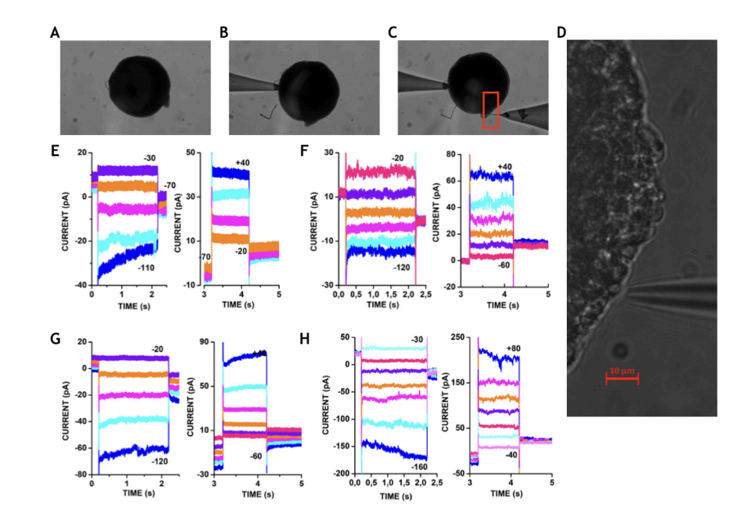
Location: Istituto di BioRobotica – Scuola Superiore Sant’Anna,
Area della Ricerca del CNR, Via G. Moruzzi, 1 – 56124 Pisa
Lab head: Prof. Debora Angeloni
Contact: ivana.barravecchia@santannapisa.it, debora.angeloni@santannapisa.it
Lab Team

Ivana Barravecchia
Lab Manager
Istituto di Biorobotica
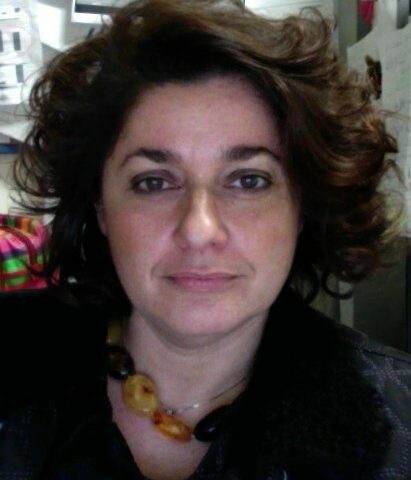
Debora Angeloni
Associate Professor
Istituto di Biorobotica
Lab Mission
The PATCHO Laboratory offers a state-of-the-art facility for measuring and characterizing the electrophysiological properties of live systems, with a focus on advancing biorobotics technologies. As a key resource within the BioRobotics Institute, the PATCHO Laboratory will establish itself as a leading hub for patch clamp setups and experiments. This technique, which involves studying ionic currents in isolated cells, tissue sections, or membrane patches, is essential for research on excitable cells like neurons, cardiomyocytes, muscle fibers, and pancreatic beta cells. It is also applicable to bacterial ion channels in especially prepared giant spheroplasts. Given its versatile applications, the facility will be equipped to support a wide range of biological samples, making it an invaluable resource for both the institute and the broader scientific community.
How it Works:
Patch clamp recordings are performed using a hollow glass tube, called a micropipette or patch pipette, which is filled with an electrolyte solution. This pipette, connected to a recording electrode, is gently placed on the membrane of an isolated cell. A second electrode is placed in the surrounding bath as the reference ground electrode. The resulting electrical circuit allows for precise measurements of ionic currents flowing through the cell membrane.
The facility will be structured as a modular space, dedicated to patch clamp experiments under advanced microscopy. Equipped with cutting-edge scientific instruments, the lab will also ensure proper safety, storage, and waste disposal.
Devices
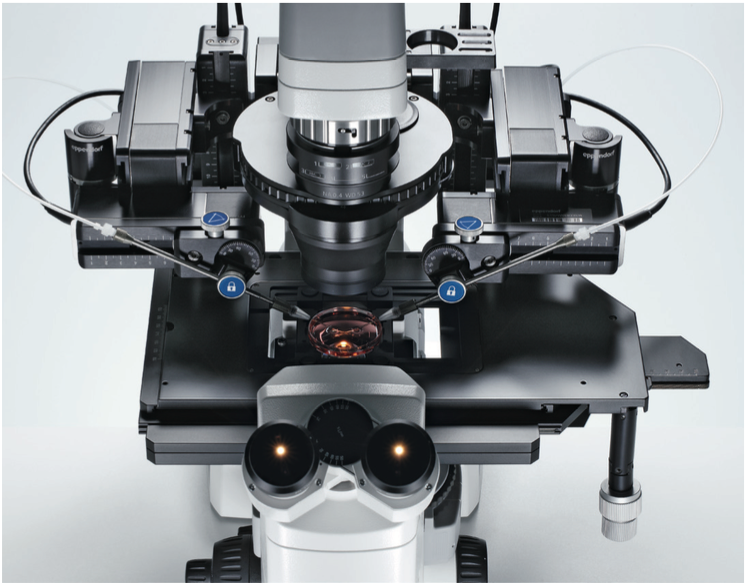
TransferMan4r – Eppendorf
The TransferMan 4r Micromanipulator sets the industry standard for precision and ease of use in the field of micromanipulation of the capillary. Designed with ergonomics and innovative technology, it is perfectly suited for manipulating both adherent and suspension cells during electrophysiological recordings.
Key Features:
- DualSpeed™ Joystick: It enables precise, instantaneous control and positioning with two selectable speeds for versatile manipulation.
- Ergonomic Control Panel: Designed for fatigue-free operation during extended use.
- Automated Capillary and Sample Change: It features a home function for quick, easy capillary and sample swaps.
- Advanced Functionality: It allows programming and selectiing additional functions, such as storing up to five positions, setting limits, and adjusting Y-off.
Data sheet: download
Note: The use of the instrument requires the presence of the dedicated technician.
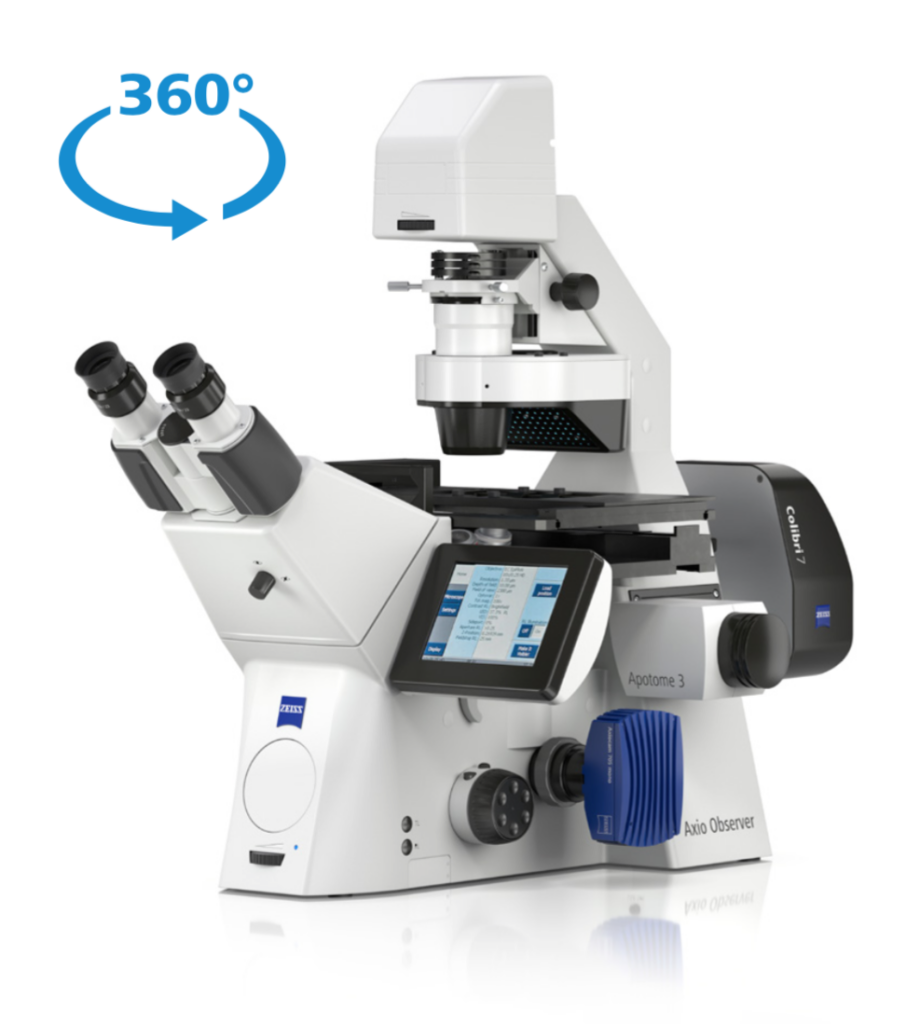
Axio Observer Inverted Fluorescence Microscope – Zeiss
This is an inverted epi-fluorescence microscope equipped with:
- Stage Top Incubators, useful for long-term cell live analysis
- Analysis software with multiple functions (FREP, FRET)
- Apochromatic objectives
- High performance piezoelectric Z stack for 3D analysis
- Best performing camera with FPS of 73, very high resolution, Pixel size: 4.5 μm x 4.5 μm Chip size: 14.5 mm x 9.9 mm, equivalent to 1.1″
Data sheet: download
Note: The use of the instrument requires the presence of the dedicated technician
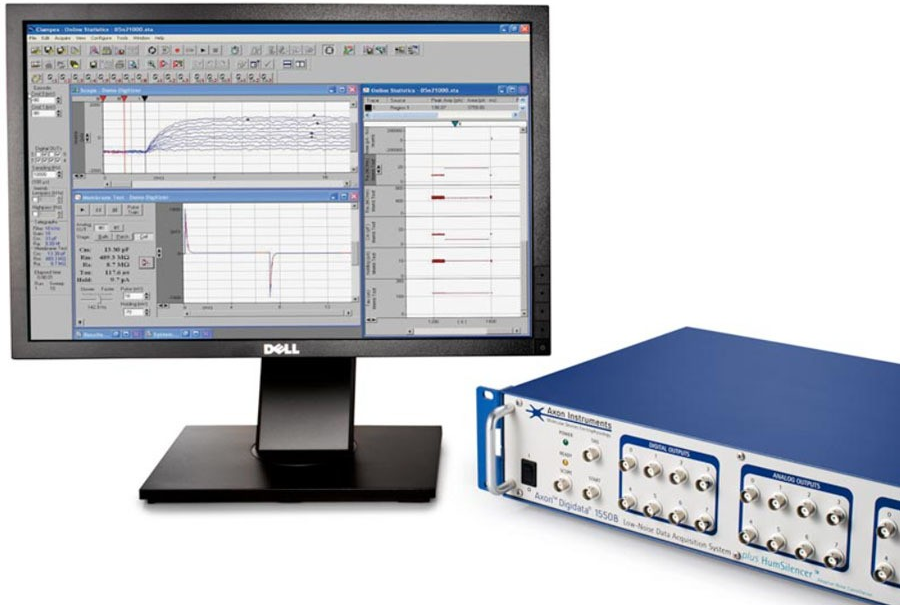
Digidata 1550B plus HumSilencer – Axon
The Axon Digidata 1550B is a high-resolution, low-noise digitizer equipped with HumSilencer™ Adaptive Noise Cancellation, designed to eliminate 50/60 Hz line-frequency noise with exceptional precision making it ideal for demanding electrophysiological experiments.
Key Features:
- HumSilencer™ Technology: Built-in adaptive noise cancellation for up to four channels, activated with a single click.
- Fast Noise Elimination: Eliminates 50/60 Hz line-frequency noise in under one second, ensuring clear, artifact-free recordings.
- Noise Learning: Automatically learns and adapts to noise patterns between sweeps, ideal for episodic experiments.
- Precise Signal Analysis: Capable of analyzing even very small signals, maintaining the integrity of your data.
- Multiple Analog Outputs: Includes eight analog outputs for versatile data handling and experiment configuration.
Data sheet: download
Note: The use of the instrument requires the presence of the dedicated technician
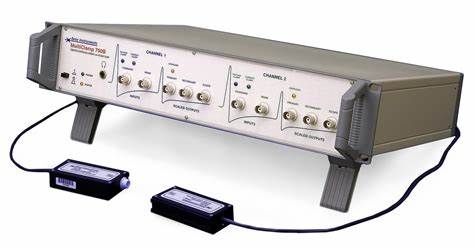
MultiClamp 700B Microelectrode Amplifier – Axon
The MultiClamp 700B Microelectrode Amplifier is a state-of-the-art, computer-controlled amplifier designed for both current-clamp and voltage-clamp applications. It is optimized for high-precision electrophysiological recordings in a variety of experimental setups.
Key Features:
- Versatile Recording Capabilities: It supports high-speed current clamp, sharp electrode or field potential measurements, ion-selective electrode recording, amperometry/voltammetry, and bilayer membrane recordings.
- Multi-Headstage Support: It accommodates up to two primary headstages and two optional auxiliary headstages, enabling simultaneous, multi-channel recordings for enhanced experimental flexibility.
Data sheet: download
Note: the use of the instrument requires the presence of the dedicated technician
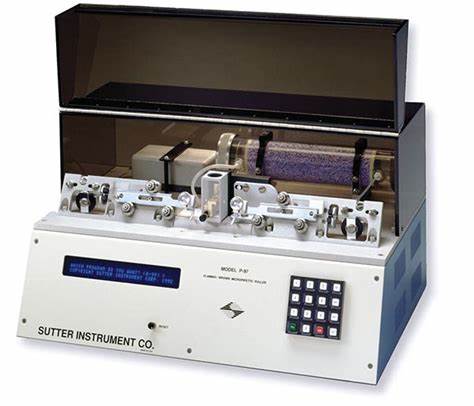
P-1000 Micropipette Puller System – Sutter
is an advanced digital micropipette puller, equipped with diagnostic testing for all puller components. It includes built-in error detection for air pressure loss and filament burnout, as well as tools for ramp tests, jaw temperature measurements, and access to previous pull results, including heat-on times for each cycle.
Key Features:
- Safe Heat Mode: It protects the filament and extends its lifespan by controlling heat application.
- Pipette Cookbook Program Directory: It includes a comprehensive directory of pre-configured programs for different pipette pulling applications.
- Dual Pipette Pulling: It generates two symmetrical pipettes with each pull for increased efficiency.
- Self-Contained Air Supply: It features an integrated air supply with a filtration system and humidity control chamber to ensure consistent performance.
- Memory Storage: Stores up to 100 custom programs for quick retrieval and repeated use.
Data sheet: download
Note: the use of the instrument requires the presence of the dedicated technician
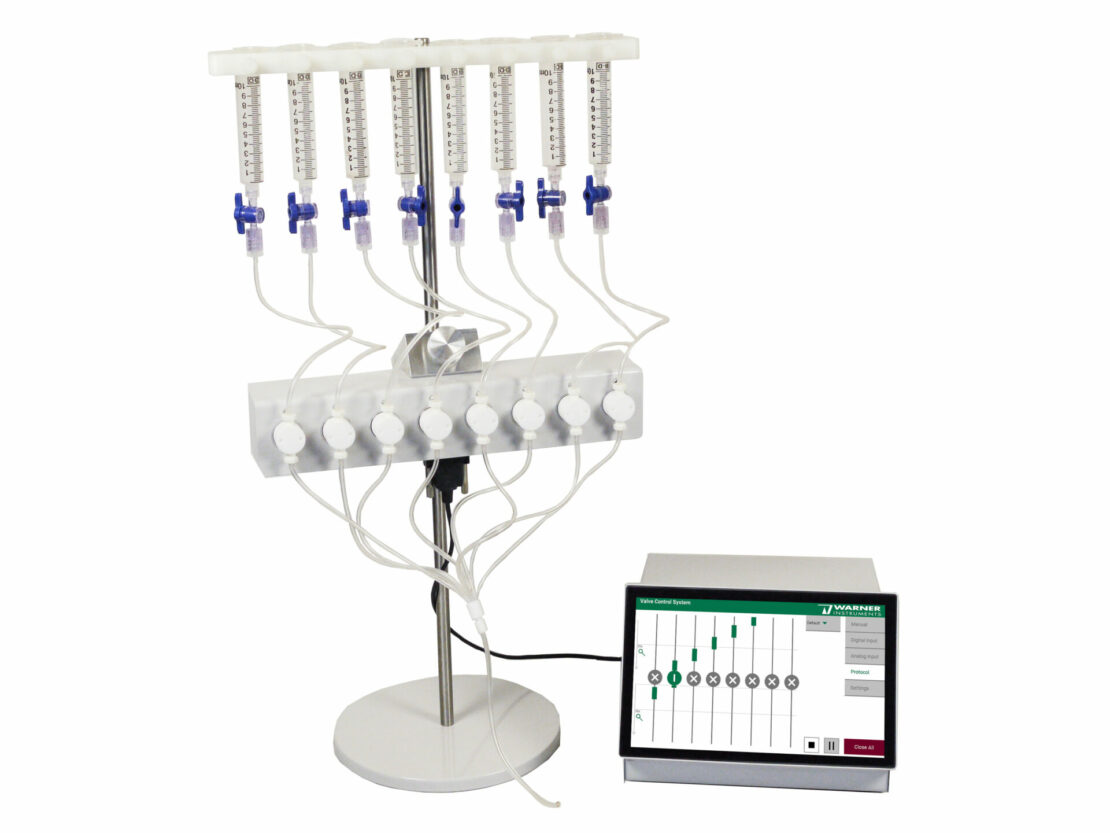
Valve Control System – Warner
Perfusion and Fluid Control systems enable rapid and complete solution exchange in various cell biology assays. These systems are particularly valuable for controlling fluid flow, such as culture medium in cell cultures. Precise flow rate control is crucial for replicating the dynamic cell environment, and for controlling experimental modification of it.
Key Features:
- Valve Configuration: It supports control of six or eight Pinch, Mini, or PTFE valves for versatile fluid handling.
- Flexible Control Options: It allows individual valve access through a manual touch display, software, or external analog/digital signals (TTL).
- Customizable Protocols: The software enables the creation of new perfusion protocols, with the ability to store and reuse them for future experiments.
Data sheet: download
Note: the use of the instrument requires the presence of the dedicated technician



